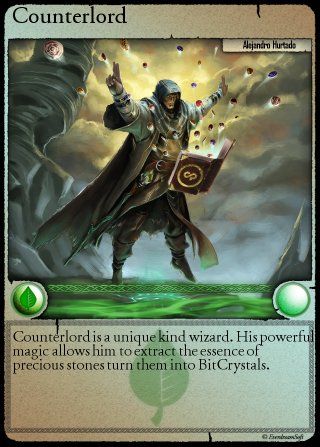Bitcoin Tokenization: Security - Simplicity - Robustness
Tokenization is revolutionizing the way we perceive ownership and trade of both tangible and intangible assets. By converting ownership rights into blockchain-based tokens, tokenization leverages the security, decentralization, and infrastructure of blockchain technology.
While Ethereum often steals the show when it comes to tokenization, a more secure, time-tested alternative is hiding in plain sight. This is where Counterparty enters the stage - a protocol that extends Bitcoin's functionality and opens up new possibilities for digital asset creation and management.

If you're familiar with NFTs and asset tokenization but haven't explored the Bitcoin side of things, you're in for a treat.
If you’re a complete newcomer, you have chosen the perfect entry-point to the world of tokenization.
Let’s explore the reasons why ORBital has made a strategic decision to build on the Bitcoin blockchain and why it is also the perfect choice for you!
Security, Simplicity, Robustness
Bitcoin, the OG of blockchain technology, has been standing strong since 2009. While newer blockchains have come and gone, Bitcoin has weathered every storm, emerging stronger each time. This track record is unmatched in the blockchain space, making it an ideal foundation for secure asset tokenization.
Unparalleled Security
-
Decentralization: Bitcoin's network is highly decentralized, with nodes spread across the globe, which makes it extremely difficult for any single entity or group to compromise the network's integrity.
-
Proof-of-Work Consensus: The extreme decentralization of the protocol is ensured thanks to Bitcoin's Proof-of-Work consensus mechanism, which requires significant computational power to validate transactions.
-
Simplicity as a Strength: No smart contracts: It's not a bug, it’s a feature! While some may view Bitcoin's lack of native smart contract functionality as a limitation, we at ORBital see it as a significant advantage.
-
Reduced Attack Surface: Fewer complexities mean a smaller attack surface, reducing the risk of hacks and exploits, that may lead to considerable and unrecoverable fund losses.
Building on Solid Foundations
-
Liquidity and Market Depth: Bitcoin remains the most liquid and widely traded cryptocurrency, providing a stable foundation for tokenized assets.
-
Network Effect: Bitcoin's widespread adoption and recognition provide a larger potential user base and easier onboarding for newcomers to the space.
By leveraging Bitcoin's robust and secure infrastructure, ORBital becomes a platform that prioritizes the safety of your digital assets and ensures their preservation over time.
Counterparty: The Bridge to Bitcoin Tokenization
Counterparty is an open-source, peer-to-peer platform and distributed protocol built on top of the Bitcoin blockchain, launched in 2014.
Counterparty enables the creation of tradable user-generated assets, decentralized financial instruments, and a decentralized asset exchange.
Did you know that some of the earliest NFT collections, like "Spells of Genesis" (2015) and "Rare Pepe" (2016), were created using Counterparty?!
Counterparty - Key Characteristics
-
Built on Bitcoin blockchain: Counterparty operates on top of the Bitcoin blockchain, leveraging its security and stability. All Counterparty transactions are recorded on the Bitcoin blockchain, requiring some fractions of Bitcoin to pay the transaction fees.
-
Decentralized Exchange (DEX): Counterparty includes a decentralized exchange where users can trade their digital assets without the need for a centralized intermediary.
-
Open Source: Counterparty is an open-source project, meaning its code is publicly available and can be audited, modified, and improved by anyone.
Ordinals
Counterparty is not the only protocol allowing tokenization on Bitcoin, there are several other options, each suitable for a distinct set of use cases. One of the most well-known ones is Ordinals.
Ordinals are a way to create NFT-like assets on Bitcoin by inscribing data (images, text, videos, etc.) directly onto individual satoshis, the smallest unit of BTC. In this regard, ordinal NFTs are completely Bitcoin-native.
While the Bitcoin-native character of Ordinals may seduce some, you should know that this method also has several limitations.
-
Limited Space & Image Quality: Bitcoin blocks are capped at 4 MB, which means inscriptions must fit within that space. Since the on-chain storage is limited, most Ordinals use low-resolution images or compressed files to stay efficient. Bigger files mean higher fees and storing large images or detailed artwork directly on Bitcoin can be very costly.
-
Risk of Accidental Loss: Ordinals can be accidentally sent away in a regular Bitcoin transaction if the wallet doesn’t distinguish them.
The Right Choice
Counterparty, with its rich history and proven track record, remains a powerful tool for those looking to leverage Bitcoin's security and decentralization for asset tokenization. As the blockchain space continues to mature, the unique advantages of Bitcoin tokenization may yet find their place in the broader digital asset landscape.
Are you ready to explore the secure, simple, and robust world of Bitcoin tokenization?